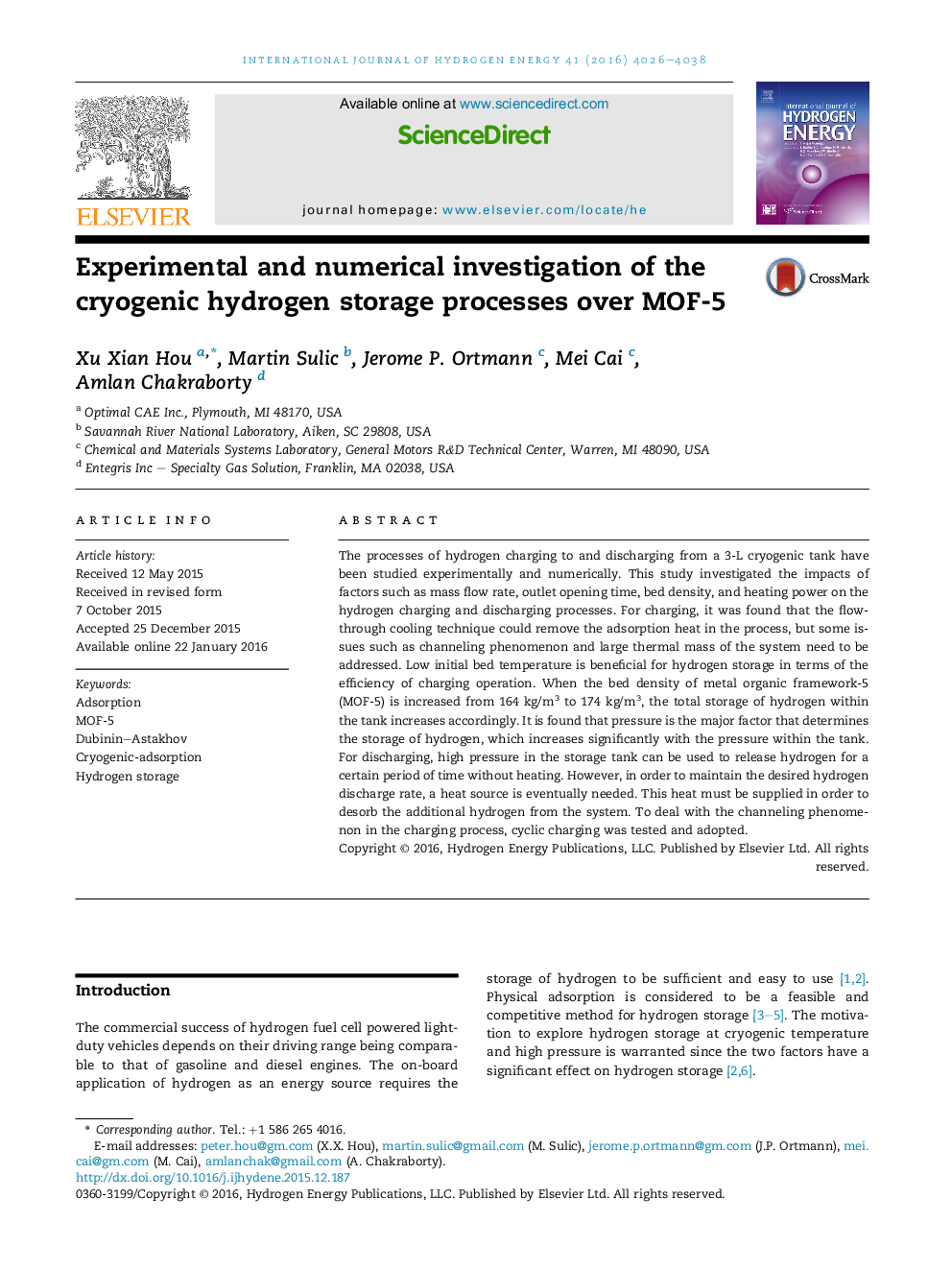| Article ID | Journal | Published Year | Pages | File Type |
|---|---|---|---|---|
| 1277932 | International Journal of Hydrogen Energy | 2016 | 13 Pages |
Abstract
The processes of hydrogen charging to and discharging from a 3-L cryogenic tank have been studied experimentally and numerically. This study investigated the impacts of factors such as mass flow rate, outlet opening time, bed density, and heating power on the hydrogen charging and discharging processes. For charging, it was found that the flow-through cooling technique could remove the adsorption heat in the process, but some issues such as channeling phenomenon and large thermal mass of the system need to be addressed. Low initial bed temperature is beneficial for hydrogen storage in terms of the efficiency of charging operation. When the bed density of metal organic framework-5 (MOF-5) is increased from 164Â kg/m3 to 174Â kg/m3, the total storage of hydrogen within the tank increases accordingly. It is found that pressure is the major factor that determines the storage of hydrogen, which increases significantly with the pressure within the tank. For discharging, high pressure in the storage tank can be used to release hydrogen for a certain period of time without heating. However, in order to maintain the desired hydrogen discharge rate, a heat source is eventually needed. This heat must be supplied in order to desorb the additional hydrogen from the system. To deal with the channeling phenomenon in the charging process, cyclic charging was tested and adopted.
Keywords
Related Topics
Physical Sciences and Engineering
Chemistry
Electrochemistry
Authors
Xu Xian Hou, Martin Sulic, Jerome P. Ortmann, Mei Cai, Amlan Chakraborty,
